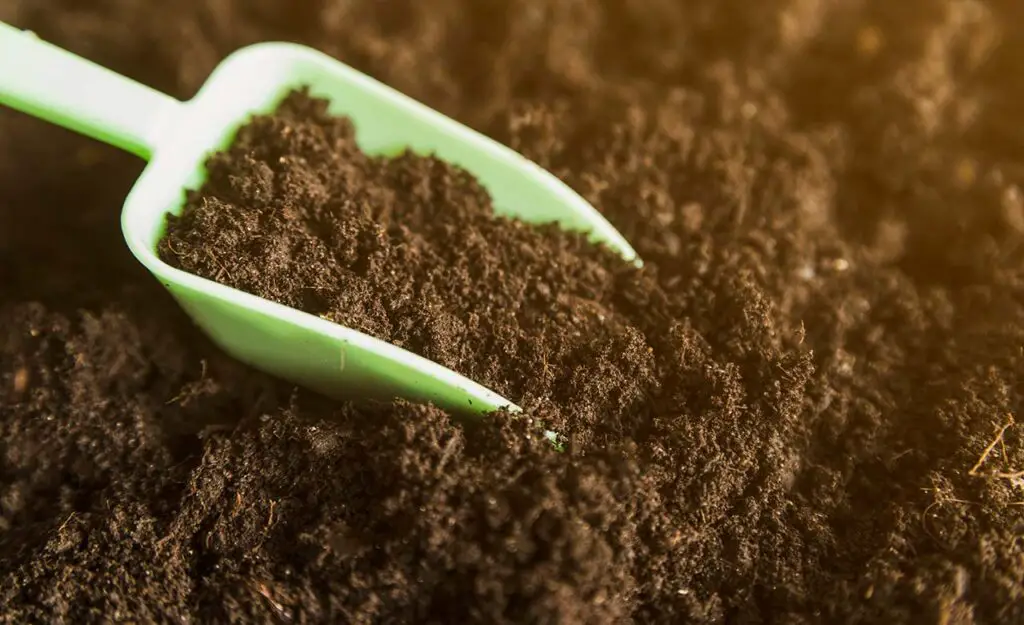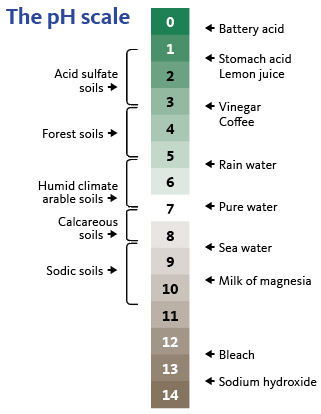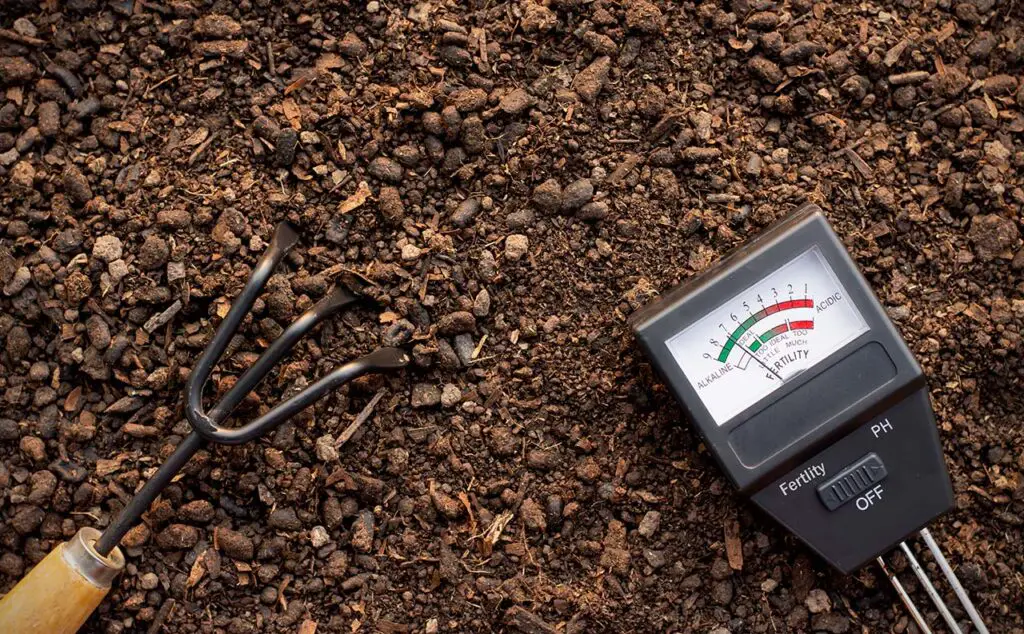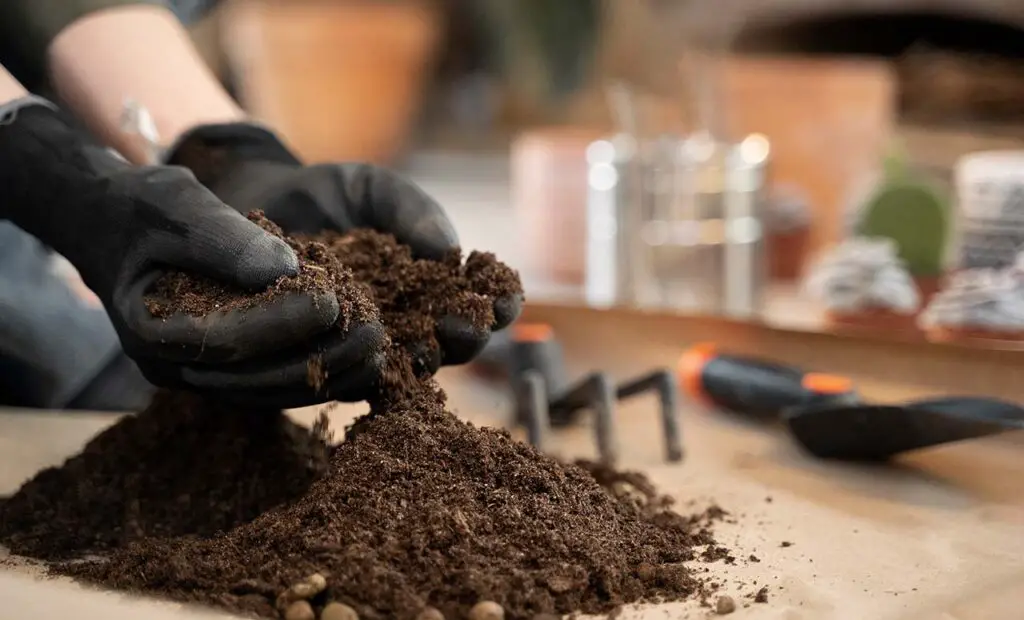How To Lower pH In Soil Fast
Are your plants lookin’ a little under the weather, even though you’ve been taking good care of ’em?
Sometimes, the issue might be hiding right under your feet — yup, we’re talkin’ about your soil’s pH level.
Getting that pH right is super important for your plants to thrive, and if it’s too high, you’re gonna wanna lower it as fast as you can.
Stick around, and we’ll dive into the nitty-gritty of soil pH and show you how to lower it in a jiffy, so your garden can bounce back to its full, lush glory.

Getting to Know Soil pH
Before we dive into fixing your soil, let’s chat about what soil pH actually is.
In a nutshell, pH is a scale that tells you how acidic or alkaline a substance is, ranging from 0 to 14.
A pH of 7 is what we consider neutral, while anything below 7 is acidic, and above 7 is alkaline.

Ideal pH Range for Your Green Friends
Most plants are pretty chill and can handle a slightly acidic to neutral soil pH, somewhere between 6.0 and 7.0.
There are some finicky plants, like blueberries and azaleas, that prefer a more acidic soil, but for the most part, you’re safe in that 6.0 to 7.0 range.
Ideal pH ranges for plants |
|
|
Plant |
Soil pH |
|
Alfalfa |
6.5–7.5 |
|
Barley |
5.5–7.0 |
|
Blueberries |
4.5–5.5 |
|
Carrots |
6.0–6.8 |
|
Corn |
5.8–6.8 |
|
Potato |
5.0–5.5 |
|
Tomato |
6.0–6.8 |
|
Wheat |
6.0–7.0 |
Why does pH matter, you ask? Well, my friend, let’s talk nutrients!
Soil pH and Nutrient Availability
You might not know it, but soil pH plays a big role in how well your plants can access essential nutrients.
When the pH is off, nutrients can become unavailable to your plants, leading to some sad, nutrient-starved greenery.
For example, if your soil’s too alkaline, your plants might struggle to get enough iron, manganese, or phosphorus.
On the flip side, if it’s too acidic, your plants could miss out on calcium, magnesium, and potassium.
So, getting that pH in check is a heckuva big deal for your plant pals!
Plant Health and pH Balance
When your soil’s pH is in the sweet spot, your plants can take up all the nutrients they need, leading to healthy, happy greenery.
But if the pH is too high or too low, your plants can start showing signs of stress, like yellowing leaves, stunted growth, or even wilting.
So, if your soil’s pH is off, it’s time to take action and get it back on track.
High Soil pH: What’s the Big Deal?
So, you suspect your soil’s pH might be too high, but how can you really tell?
Well, there are some telltale signs that your soil’s swingin’ on the alkaline side, and they’re not too pretty.
Let’s dig into the symptoms and issues that come with high soil pH.

Nutrient Deficiencies: The Struggle is Real
When your soil’s pH is too high, certain nutrients become harder for plants to grab.
It’s like tryin’ to eat soup with a fork – not fun!
You might notice your plants looking a bit off-color, with yellowing leaves or poor growth.
These are classic signs of nutrient deficiencies caused by high soil pH.
Some of the most common nutrients affected are iron, manganese, and phosphorus, which are all essential for healthy plant growth.
Poor Plant Growth: Stuck in a Rut
High soil pH ain’t just a bummer for nutrients; it can also stunt your plants’ growth.
When plants can’t get the nutrients they need, they can’t grow to their full potential.
You might notice slower growth, smaller leaves, or even reduced fruit and flower production.
It’s like your plants are stuck in a rut, and they need your help to break free!
Disease Dilemmas: Alkaline Soil Woes
Believe it or not, high soil pH can also make your plants more susceptible to certain diseases.
That’s right – when the pH is off, it can throw off the whole plant’s natural defenses.
Some diseases, like clubroot in brassicas or take-all root rot in grasses, are more likely to strike when the soil’s pH is too high.
So, keepin’ that pH in check is essential for protecting your plants from these pesky problems.
Know Your Soil: Testing pH Like a Pro
Before we go fixin’ things, we gotta make sure we know what we’re dealin’ with, right?
That means testin’ your soil’s pH to get an accurate read on what’s goin’ on down there.
There are a few ways you can do this, from home testing kits to professional soil tests.
Home Testing Kits: DIY Dirt Detectives
For all you DIYers out there, home testing kits are a solid option.
You can find these bad boys online or at your local garden center.
They’re usually pretty affordable, and they give you a rough idea of your soil’s pH.
Keep in mind, though, these kits might not be as accurate as professional tests.
But hey, they’re a good place to start if you’re lookin’ for a quick and easy way to check your soil’s pH.
Professional Soil Tests: The Gold Standard
If you’re lookin’ for the most accurate soil pH measurement, it’s hard to beat a professional soil test.
These tests, usually performed by local agricultural extension offices or private labs, provide you with precise pH levels and other valuable info about your soil.
Sure, it might cost a bit more, but it’s worth it if you want the best intel on your dirt.
Accuracy Matters: Don’t Jump the Gun
It’s super important to get an accurate pH reading before takin’ any corrective action.
You don’t want to go addin’ stuff to your soil only to find out later that you didn’t need to – or worse, that you made the problem even bigger.
So, take the time to get a good read on your soil’s pH before you start playin’ with chemistry. Your plants will thank you for it!
Quick Fixes: Lowerin’ Soil pH in a Jiffy
Alright, now that we know our soil’s pH is too high, let’s get down to business and talk about some ways to lower it fast.
There’s a few methods you can use, so let’s figure out what’s gonna work best for your sitch.
Elemental Sulfur: The Heavy Hitter
First up, we got elemental sulfur. This stuff’s a powerhouse when it comes to lowerin’ soil pH.
When you apply sulfur to your soil, soil bacteria convert it into sulfuric acid, which helps bring down that pH level.
You’ll wanna follow the application rates on the product label and make sure to take proper safety precautions, like wearin’ gloves and goggles.
Acidifying Fertilizers: Double Duty
If you’re lookin’ for a one-two punch, acidifying fertilizers like ammonium sulfate or urea might be the way to go.
Not only do they help lower your soil’s pH, but they also provide some much-needed nutrients for your plants.
Just be sure to follow the recommended application rates, and don’t go overboard, or you might end up with a whole new set of problems.
Organic Materials: Nature’s Solution
Want a more natural approach? You can try usin’ organic materials like peat moss, pine needles, or coffee grounds to lower your soil’s pH.
Just mix ’em into the soil, and they’ll release their natural acidity, helpin’ to bring that pH down over time.
Keep in mind, though, that this method might not work as fast as some of the others we’ve talked about.
Acidifying Irrigation Water: Liquid Solution
Last up, we got acidifying irrigation water.
This method involves addin’ an acidic solution to your waterin’ routine.
It can help to lower your soil’s pH gradually, but you’ll need to be careful with the amounts you use.
Too much acid in the water can harm your plants, so make sure to follow guidelines and test your water’s pH regularly to keep things in check.
Speedin’ Up or Slowin’ Down: Factors Affectin’ pH Adjustment
Now, you might be wonderin’ why your soil’s pH isn’t changin’ as fast as you’d like.
Well, there are a few factors that can impact how quickly your soil’s pH adjusts, so let’s dig into those a bit and see what’s goin’ on.
Soil Type: Clay vs. Sandy
First up, we got soil type. If you’ve got clay soil, it’s gonna be more resistant to pH changes than sandy soil.
That’s because clay particles are tiny and packed with negative charges, which can hold onto positively charged ions like hydrogen (H+) and aluminum (Al3+).
So, if you’ve got clay soil, you might need to be more patient or use larger amounts of acidifying materials to see the pH change you’re after.
Organic Matter Content: Keepin’ It Real
Next, we got organic matter content.
Soils that are rich in organic matter tend to buffer pH changes more effectively than those that are low in organic stuff.
That means if your soil’s got a lot of organic matter, you might need to put in a bit more effort to lower the pH.
On the flip side, if your soil’s low in organic matter, pH changes can happen faster, so you’ll wanna keep an eye on that and not overdo it with the acidifying treatments.
Weather Conditions: Rain, Rain, Go Away
Last, but not least, we got weather conditions.
Rain can have a big impact on how quickly your soil’s pH changes.
If you’re in a rainy area, all that extra water can help move the acidifying materials through the soil, speedin’ up the pH adjustment process.
On the other hand, if you’re in a dry area, you might need to water your soil more frequently to help speed things up.
Just be careful not to overwater, or you could cause other issues, like root rot.
So, there you have it! Keep these factors in mind when you’re workin’ on lowerin’ your soil’s pH, and you’ll be on your way to creating the perfect environment for your plants to thrive.
Keepin’ an Eye on Your Soil pH: Why Monitorin’ Matters
So, you’ve done all the hard work to lower your soil’s pH, but don’t go puttin’ your feet up just yet!
It’s super important to keep an eye on your soil’s pH after you’ve added those amendments, so you can make sure you’re hittin’ that sweet spot and keepin’ it there.
Let’s talk about why monitorin’ your soil pH is crucial and how to do it right.

The Importance of Regular Checkups
Once you’ve started adjustin’ your soil’s pH, you’ll wanna make sure you’re actually gettin’ the results you’re after.
That means keepin’ a close eye on your soil pH over time, so you can see if the changes you’ve made are workin’ and if you need to make any adjustments.
Plus, by regularly monitorin’ your soil pH, you can catch any issues early on and fix ’em before they become a real headache.
How Often to Test Soil pH
Now, you might be wonderin’ how often you should be testin’ your soil pH.
A good rule of thumb here is to check it every 3-6 months after applyin’ amendments.
That should give you enough time to see how your soil’s pH is reactin’ to the changes you’ve made.
But, if you’ve got a sensitive crop or you’re dealin’ with some particularly stubborn pH issues, you might wanna test more frequently, like every month or two.
Keepin’ It Steady
Remember, the goal here is to reach and maintain the ideal pH level for your plants, so they can grow strong and healthy.
That means you’ll wanna keep an eye on your soil pH even after you’ve hit the sweet spot, to make sure it doesn’t start creepin’ back up again.
Regular monitorin’ can help you spot any shifts in pH and take corrective action before your plants start feelin’ the effects.
Keepin’ High Soil pH at Bay: Tips for Prevention
Now that you know how to lower soil pH fast, let’s talk about keepin’ it from creepin’ back up again.
A little prevention goes a long way, so here’s some tips to help you avoid high soil pH in the first place and keep your garden growin’ strong!
Smart Fertilization
Fertilizers are a double-edged sword – they can help your plants grow, but they can also mess with your soil’s pH.
To keep things balanced, choose the right type of fertilizer for your soil and plants.
Avoid fertilizers high in calcium or magnesium, as they can raise pH levels.
Stick to fertilizers that won’t mess with your soil pH, like ammonium sulfate or urea.
And, of course, don’t go overboard – more ain’t always better!
Hold Up on the Lime
Liming your soil can be a great way to correct acidic soil, but overdoing it can lead to high pH levels.
So, before you start throwin’ lime around, make sure you’ve tested your soil’s pH and really need it.
If you do need to lime, follow the recommended application rates and don’t overapply.
Remember, it’s always easier to add more lime later than to try to fix soil that’s become too alkaline.
Good Soil Management
Practicing good soil management is key to maintainin’ a healthy pH level.
Here’s a few things for you to keep in mind:
- Organic matter: Adding organic matter, like compost, can help buffer soil pH and keep it stable. Plus, it’ll improve soil structure and fertility – win-win!
- Crop rotation: Mixin’ up the plants you grow can help prevent pH imbalances. Different crops have different nutrient needs and pH preferences, so switchin’ things up can help keep your soil balanced.
- Proper irrigation: Overwatering can cause nutrient leaching and pH fluctuations. Stick to a regular watering schedule and avoid lettin’ your soil get waterlogged.
Keepin’ your soil pH in check is all about being proactive and attentive.
The Balancing Act: Why Soil pH Matters
Before we wrap up, let’s take a moment to remember why we’re all here: keepin’ our soil pH balanced for our plants to thrive.
It might seem like a minor detail, but trust me, it’s a big deal for your plants and the overall health of your soil.
So, let’s dive into the importance of a balanced soil pH.
Happy Plants, Happy Garden
When your soil pH is in the sweet spot, it’s like a green light for your plants.
They can access all those essential nutrients they need to grow strong and healthy.
Too high or too low, and those nutrients become locked up, leaving your plants starvin’ and strugglin’.
Balanced soil pH helps avoid issues like nutrient deficiencies, weak growth, and susceptibility to diseases and pests.
Soil Health and Microbial Activity
Let’s not forget about those tiny, hard-workin’ critters in the soil – the microbes!
They play a huge role in breaking down organic matter, fixin’ nitrogen, and recyclin’ nutrients.
A balanced pH keeps these little guys happy and active, which in turn keeps your soil fertile and healthy.
When pH is off, microbial activity slows down, and your soil’s health can take a hit.
Keepin’ It Sustainable
Maintainin’ a balanced soil pH is also about bein’ kind to Mother Earth.
When you’re managing your soil pH well, you’re less likely to need chemical interventions or excessive fertilizers.
This means less pollution and more sustainable gardening practices.
Plus, it’ll save you some green in the long run, and who doesn’t love that?
Wrappin’ It Up: Get Your Soil pH On Point

Alright, folks, we’ve covered a whole lotta ground (pun intended) when it comes to lowerin’ soil pH in a jiffy.
So, let’s do a quick recap of the essentials before you go out there and work your garden magic:
- Understandin’ soil pH is key – know what’s ideal for your plants and how it affects nutrient availability and plant health.
- Recognize the signs of high soil pH, like nutrient deficiencies and poor growth, so you can act fast and fix the problem.
- Test your soil pH before you take any action – accuracy is crucial!
- Lower soil pH quickly with elemental sulfur, acidifying fertilizers, organic materials, or acidifying irrigation water, but always follow safety precautions and recommended application rates.
- Remember that factors like soil type, organic matter content, and weather conditions can impact how fast your soil pH changes, so be patient and monitor your progress.
- Keep an eye on your soil pH after amendments to make sure you’ve hit your target and maintain the balance.
- Prevent high soil pH by practicing good soil management techniques, proper fertilization, and avoiding overliming.
- Never forget the importance of a balanced soil pH for healthy plants, a thriving soil ecosystem, and sustainable gardening.
With all this knowledge under your belt, you’re ready to tackle high soil pH head-on and create the perfect environment for your garden or landscape to flourish.


